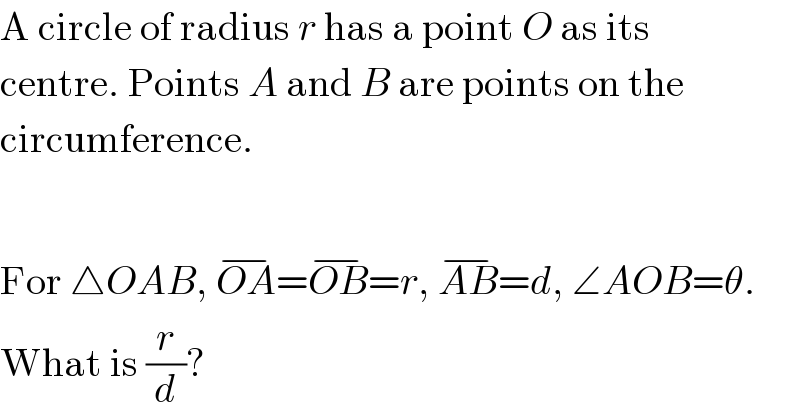
Question and Answers Forum
Question Number 6758 by FilupSmith last updated on 23/Jul/16

Commented by FilupSmith last updated on 23/Jul/16

Commented by Rasheed Soomro last updated on 23/Jul/16
![By cosine law d^( 2) =r^2 +r^2 −2r^2 coθ=2r^2 (1−cosθ) (r^2 /d^( 2) )=(1/(2(1−cosθ))) (r/d)=+(√(1/(2(1−cosθ)))) [Since r,d>0 , (r/d)>0] =(1/(√(2(1−cosθ))))........................A −−−−−−−−− By Pythagorus theorm sin(θ/2)=((d/2)/r)=(d/(2r)) (d/r)=2sin(θ/2) But sin(θ/2)=±(√((1−cosθ)/2)) Hence (d/r)=2(+(√((1−cosθ)/2))) [Since r,d>0 , (r/d)>0] (r/d)=(1/2)(((√2)/(√(1−cosθ))))=(1/(√2))((1/(√(1−cosθ)))) =(1/(√(2(1−cosθ)))).......................B Both results are same.](Q6760.png)
Commented by FilupSmith last updated on 24/Jul/16

Commented by sandy_suhendra last updated on 25/Jul/16

